Exploring Kitesurfing: A Detailed Look at Slingshot Gear
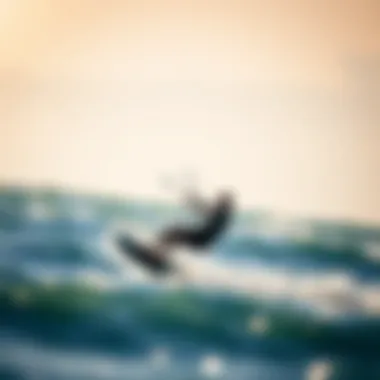
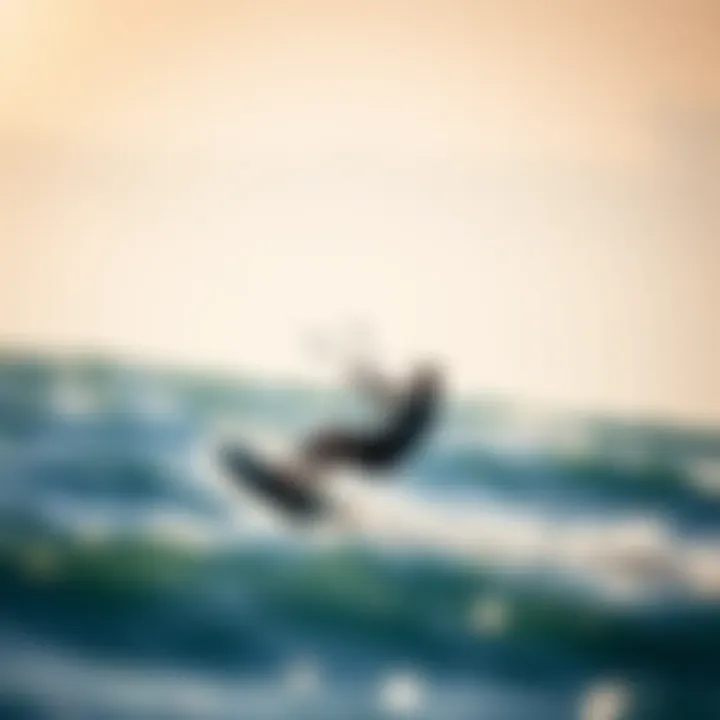
Intro
Kitesurfing has taken the world of extreme sports by storm over the years, merging the thrill of surfing with the exhilaration of paragliding. Among the myriad of brands that cater to kitesurfing enthusiasts, Slingshot is a name that consistently pops up. Known for their innovation and quality, Slingshot gear is often at the top of many riders' lists when it comes to choosing equipment. This comprehensive analysis dives into the elements that make Slingshot gear a top choice, from the performance of their kites to the adaptability of their boards.
In this article, we'll dissect the vital aspects of kitesurfing, emphasizing Slingshot's contribution to the sport. We'll also touch on essential gear and equipment suitable for every level of rider, provide techniques and tips for mastering the water, and stress the importance of safety when engaging in this thrilling activity. Riders, both novice and seasoned, can expect a wealth of insights that can enhance their kitesurfing experience.
Gear and Equipment
When it comes to kitesurfing, having the right gear can make or break your day out on the water. Slingshot offers a range of equipment aimed at meeting the needs of everyone from beginners to experienced riders. Let's break it down.
Essential Kiteboarding Gear for Beginners
For those just dipping their toes into the world of kitesurfing, having the right start can set the stage for future success. Here’s what new riders typically need:
- Kite: A beginner kite, like the Slingshot B2, is designed for stability and ease of use, making it a trustworthy companion on the water.
- Bar and Lines: Pairing your kite with a reliable control bar is crucial. The Slingshot Compstick bar offers clear visibility of line connections which is great for newcomers.
- Board: Choose a board that supports learning. A larger, wider board allows for better buoyancy and easier starts.
- Harness: A comfortable harness, like the Slingshot Rally, is essential. It should fit snugly to minimize discomfort during those lengthy sessions.
- Safety Gear: Helmets and impact vests provide protection against falls and the occasional mishaps that come when you’re just starting out.
Advanced Equipment for Experienced Riders
As riders grow in skill, the gear must evolve too. Experienced kitesurfers often seek out equipment that allows for more advanced maneuvers and higher performance. Key items include:
- High-Performance Kites: The Slingshot Ghost is an excellent option for those wanting responsive handling in varied conditions.
- Specialized Board Designs: Boards tailored for freestyle or wave riding, such as the Slingshot Misfit, offer unique shapes and flex that enhance performance.
- Dynamic Control Systems: Advanced riders often opt for the Slingshot Smart Slider System, offering adaptability for different styles and conditions.
- Safety Tools: Upgraded releases and leashes that are durable and reliable are vital for safety during high-adrenaline maneuvers.
"Choosing the right gear is like picking the right bait for fishing; it can vastly affect your success on the water."
By investing in proper gear, kitesurfers can harness the wind's full potential, ensuring every ride is not just safe but exhilarating. As we move further into this article, we will explore essential techniques and tips for making the most out of Slingshot gear and maximizing your kitesurfing experience.
Understanding Kitesurfing
Understanding kitesurfing is essential for anyone looking to dive into this exhilarating sport. It encompasses not just the thrill of riding the waves, but also the interplay of wind, water, and equipment. Knowing the basics allows riders to make informed decisions, ensuring safety and enjoyment.
History of Kitesurfing
Kitesurfing has roots trailing back centuries, with its ancestors being the Chinese kites from as early as 200 BC. The modern zest for kitesurfing, however, took shape in the late 20th century, primarily in the 1980s when innovators began experimenting with using kites for propulsion on water. The combination of surfboards and kites quickly evolved, leading to the organized sport known today. The sport exploded in popularity during the 1990s, catching waves across beaches globally. As kitesurfing found its beat, manufacturers, like Slingshot, emerged, crafting specialized equipment that suited the specific needs of riders. Exploring the evolution of kitesurfing gear offers insights into how technology shaped the riding experience through materials and design innovations.
Basics of Kitesurfing
At its core, kitesurfing involves harnessing wind power to propel oneself across water while standing on a board. Riders use a control bar to manipulate the kite, dictating direction and power. Elements such as wind direction, tide, and local weather conditions all come into play. For beginners, grasping these fundamentals is crucial. A kitesurfer must learn to gauge wind strength and how to safely launch and land the kite. Training in a safe environment with experienced instructors can mitigate risks and enhance learning. Riding technique, such as stance and balance, further defines the experience, allowing for smoother flights and reduced wipeouts.
The Role of Equipment in Kitesurfing
Equipment selection plays a pivotal role in the ultimate kitesurfing experience. The kite and board must match the rider's skill level and the prevailing conditions. For instance, larger kites provide more lift in lighter winds while smaller kites excel when wind conditions are strong. Materials and construction impact not only performance but also safety. Stronger and lighter materials ease maneuverability and reduce fatigue. Safety gear, like harnesses and impact vests, safeguard against potential mishaps. An informed choice about equipment can greatly influence a rider's progression and enjoyment in kitesurfing.
"Understanding the harmony of the elements and respecting your gear can turn every outing into a memorable adventure."
In summary, grasping the fundamentals of kitesurfing is crucial for both novices and seasoned riders. The history gives context, the basics form a foundation, and understanding equipment ensures safety and optimal performance. As one delves deeper into this sport, these elements intertwine to enhance the overall kitesurfing experience.
Foreword to Slingshot Gear
Kitesurfing enthusiasts often find themselves at a crossroads when selecting the right gear. Among the sea of brands saturating the market, Slingshot Gear stands out as a formidable name. This section delves into the importance of choosing Slingshot gear, highlighting both its innovative design and performance aspects. Slingshot has garnered a reputation for pushing the boundaries of kitesurfing equipment, and understanding this brand is essential for any rider, whether they are beginners or seasoned pros.
The evolution and advancements in Slingshot gear can greatly impact your kitesurfing experience. Their commitment to quality ensures that riders can rely on durability and functionality. Furthermore, Slingshot is known for its community focus, offering an ecosystem where riders can connect and share experiences. This makes diving into Slingshot gear not just about the equipment, but also about being part of a larger kitesurfing culture.
Overview of Slingshot Brand
Founded in the late 1990s, Slingshot has firmly planted its roots in the kitesurfing world, originally starting with wakeboarding equipment. The transition into kitesurfing gear was seamless due to an underlying philosophy of maximizing fun and performance on the water. Today, Slingshot is synonymous with innovation and quality, often leading the charge in product development within the industry.
What sets Slingshot apart, however, isn’t just their well-crafted gear but their emphasis on rider feedback. Over the years, the brand has partnered with professional kitesurfers and newcomers alike to refine their products, ensuring they cater to a broad demographic.
Slingshot gear is often lauded for its cutting-edge technology, resulting in kites and boards that not only perform well but also have longevity in mind. This focus on innovation makes the Slingshot line-up appealing to various rider types.
"The beauty of Slingshot gear lies in the details; they listen, adapt, and ultimately enhance the kitesurfing experience."
Key Features of Slingshot Equipment
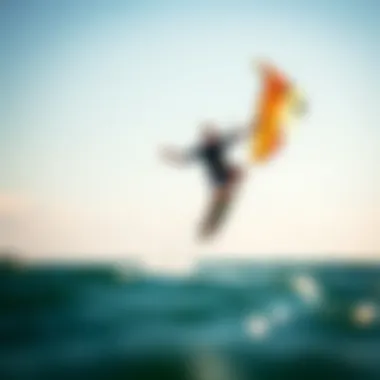
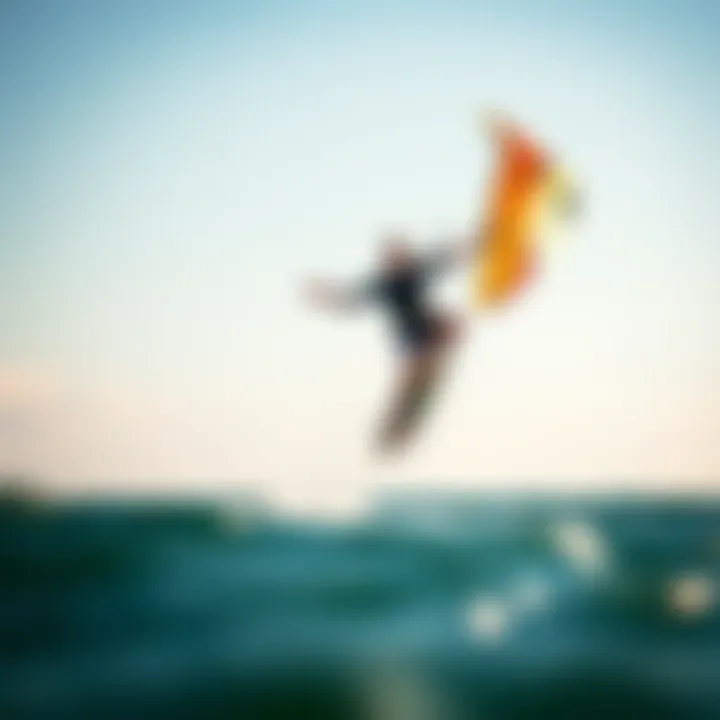
When it comes to kitesurfing, the features of your gear can make or break your performance on the water. Slingshot equipment boasts several standout attributes:
- Durability: Built to withstand varied conditions, Slingshot products undergo rigorous testing to ensure they endure the elements.
- User-Friendly Design: Easy setup and intuitive handling are hallmarks of Slingshot kites and boards, catering to both novice and advanced riders.
- Precision Control: Utilizing advanced materials and technology, Slingshot ensures that riders have better control, providing a heightened level of responsiveness while out on the water.
- Variety: A broad range of options is available, from kites suited for freestyle riding to those tailored to surf conditions, ensuring that there's something for every rider.
- Sustainable Practices: As awareness about eco-friendliness grows, Slingshot is stepping up by integrating sustainable materials into their operations, making a conscious effort to reduce environmental impact.
Slingshot Kites
When discussing kitesurfing, one cannot overlook the significance of Slingshot Kites. This brand, well-known among the kitesurfing community, has an array of products tailored to meet the diverse needs of riders. The choice of a kite can fundamentally influence a kitesurfer's experience, as it affects everything from maneuverability to stability. Opting for a Slingshot Kite often means investing in top-tier technology and design, ensuring both performance and enjoyment on the water.
Types of Kites
Slingshot offers a variety of kite types, each designed for different riding styles and conditions. Understanding these distinctions is essential for any kitesurfing enthusiast.
- Open-Celled Kites: These are designed to excel in light wind conditions. They feature a porous structure that allows air flow, maintaining stability and lift even when the breeze is just a whisper.
- Closed-Celled Kites: Built for versatility, closed-cell designs provide better performance in stronger winds. Their construction allows them to maintain shape and provide reliable lift under rapid changes in the environment.
- Hybrid Kites: Combining features from both open and closed designs, hybrid kites offer flexibility. They can handle a range of wind conditions and are suitable for riders who like to experiment with different styles.
Understanding the different kite types will help kitesurfers make informed decisions based on their local conditions and preferred riding styles.
Performance and Stability
The performance of Slingshot kites is rooted in meticulous engineering and innovative technology, which are paramount for users looking to enhance their skills. Riders can expect reliable performance regardless of their level, thanks to the kites’ construction and design features.
- Wind Range: Slingshot kites are renowned for their broad wind range. This means that a single kite can perform well whether the wind is as soft as a summer’s breeze or blowing with the conviction of a storm. This versatility gives kitesurfers the freedom to ride more often, reducing the need to change gear frequently.
- Stability: The stability of Slingshot kites gives riders confidence. A stable kite translates to a smoother ride, allowing the rider to focus on technique rather than worrying about kite behavior.
In practice, optimal performance and stability allow riders to push their limits, whether that means attempting a new trick or simply carving through the waves with style.
Kite Sizes and Their Applications
Choosing the correct kite size is a crucial aspect of kitesurfing that can affect all elements of a session.
- Small Kites (7m-9m): Ideal for strong winds, these smaller kites are responsive and quick. They cater well to advanced riders who seek precise control and performance in challenging conditions.
- Medium Kites (10m-12m): This size is often viewed as the go-to for all-round conditions. Perfect for intermediate riders, they balance power and maneuverability, making them suitable for a wide array of wind depths.
- Large Kites (13m and above): Best for light wind days, these kites generate significant lift and are great for beginner riders. They may seem sluggish in stronger winds, but they allow novices to practice their skills before stepping up to smaller sizes.
Kitesurfers need to consider both their personal riding style and the conditions they typically face when selecting a kite size. With Slingshot's range, there’s something for every rider, ensuring that anyone looking to ride will find an option that feels like a perfect fit.
Slingshot Boards
When it comes to kitesurfing, the board you choose is just as critical as the kite. Slingshot boards have carved a niche in the market, showcasing quality and innovation. The right board can elevate your kitesurfing experience, offering both the performance and comfort needed to tackle various conditions. In the following sections, we will explore the elements surrounding the choice, design, and sizing of Slingshot boards, helping you make an informed decision.
Choosing the Right Board
Selecting the right board can feel like finding a needle in a haystack, especially with the multitude of options available today. Slingshot offers an impressive range from twin tips to surfboards, catering to different styles and skill levels. Here are some considerations when zeroing in on your ideal board:
- Skill Level: Are you just starting out or are you a seasoned rider? Beginners might find softer boards forgiving, while experts may crave the responsiveness of a stiffer board.
- Riding Style: Your preferred style seriously influences board choice. For freestyle tricks, a board with a flatter rocker will help with pop, whereas a surfboard style is perfect for those who want to ride waves.
- Budget: As with any gear, your budget can narrow down your options. Slingshot offers various price points but ensure you're getting the performance goals that are worth the investment.
Take time to demo a few boards if possible. Feel the difference under your feet before making a commitment. It’s like trying a shoe – comfort is key!
Board Design and Materials
The design and material of a board play a substantial role in its performance. Slingshot boards incorporate high-quality materials, providing durability without sacrificing weight.
- Construction: Slingshot uses a mix of materials including wood and fiberglass in their boards, promoting resilience against wear and tear. Some models also feature carbon fiber for added lightness and strength.
- Shape and Flexibility: The contour of the board influences how it reacts on the water. Slingshot boards often utilize a unique outline, allowing quick transitions and stability at high speeds.
Understanding the technical aspects of board design can be the difference between an enjoyable ride and a grueling one. Look into how various designs complement your skillset and preferences.
Board Size Considerations
Size matters—particularly when it comes to kitesurfing boards. Selecting the right size can enhance your performance and comfort on the water.
- Rider Weight: Heavier riders generally benefit from larger boards that provide better floatation, while lighter individuals might prefer smaller boards for agility.
- Wind Conditions: Bigger boards can catch more wind; if you're often battling strong winds, a larger size can keep you stable. Conversely, smaller boards can offer precision for trick-based riding in lighter winds.
- Experience Level: Beginners should consider starting with a medium-sized board, as it delivers a balance between stability and maneuverability.
In sum, understanding the size will ensure that riders can optimize their potential on the water, maximizing the performance of Slingshot boards.
"The beauty of kitesurfing lies not just in the thrill, but in the intimate relationship between rider and gear. Choosing the right board is a crucial part of that journey."
By carefully considering the elements of choosing, designing, and sizing Slingshot boards, riders can confidently enhance their kitesurfing experience well into the future.
Harnesses and Safety Gear
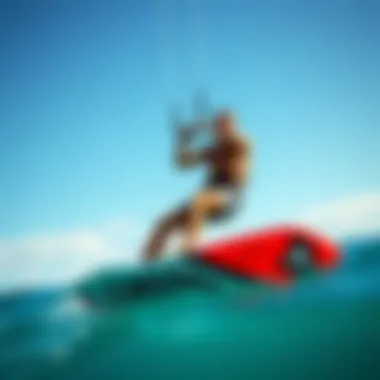
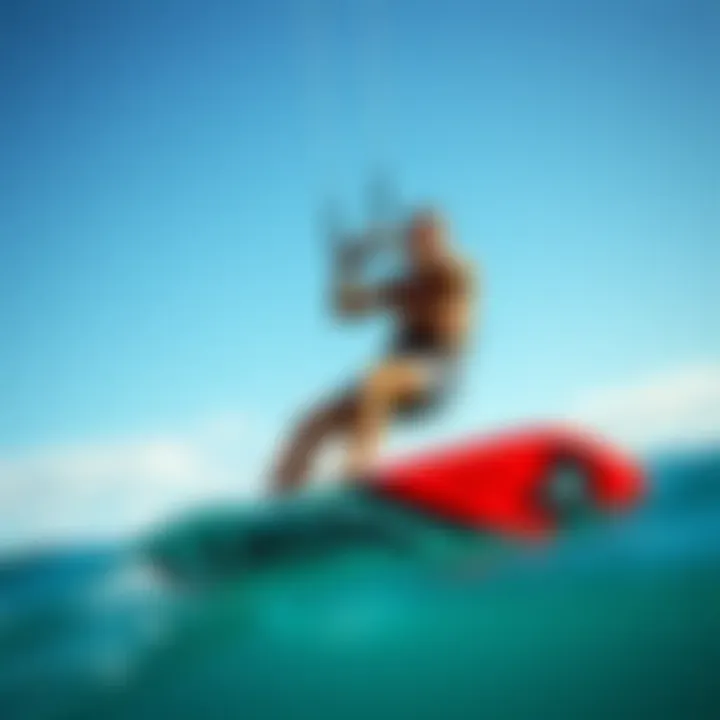
In the exhilarating world of kitesurfing, harnesses and safety gear play a pivotal role that cannot be overlooked. Many riders might be tempted to focus solely on the glitz of kites and boards, overlooking the essential aspects of safety and comfort provided by harnesses. Understanding this topic is crucial for any enthusiastic kitesurfer, as it not only ensures a more enjoyable experience on the water but also significantly reduces risks associated with the sport.
Kitesurfing, despite its thrilling nature, comes with risks that demand attention. Improper harness selection or neglecting safety gear can lead to accidents. Thus, it’s vital for both beginners and seasoned riders to understand the connection between harnesses, safety equipment, and the overall kitesurfing experience.
Understanding Different Harness Types
When it comes to harnesses in kitesurfing, there are primarily two types you need to know about: waist harnesses and seat harnesses. Each serves its own purpose and caters to various riding styles and preferences.
- Waist Harnesses: These are the most popular choice among kitesurfers due to their flexibility and low profile. Waist harnesses allow for greater freedom of movement, making them ideal for tricks and jumps. Riders looking for a more agile experience often opt for these.
- Seat Harnesses:
As the name suggests, these harnesses sit lower on the body and provide more support. They distribute weight more evenly and are favorable for beginners or those who may struggle with balance. These harnesses can also help prevent the harness from riding up, making them a comfortable choice for longer sessions.
When choosing a harness, it's vital to consider fit and comfort. A poorly fitting harness can lead to chafing or even accidents, so always ensure you try before you buy.
Importance of Safety Gear
Safety gear is the unsung hero of kitesurfing. While the thrill of the sport captures the imagination, it is the protective equipment that can safeguard the rider from potential hazards. Below are some critical components of safety gear:
- Impact Vests:
These vests provide buoyancy and cushioning during falls, reducing the risk of injury. It's a good idea to wear one even if the water seems calm. - Helmets:
Head injuries can be severe, so using a helmet is highly recommended. A solid helmet can protect against impacts from the board, other riders, or even hard water landings. - Leashes:
A reliable leash ensures that the kite remains tethered to the rider, preventing it from launching unexpectedly in case of a fall. It can also save you from losing your gear in the waves. - ** cuts and other Materials:**
Safety gear should be made from durable materials that can withstand rough conditions. Check for reinforced stitches and essentially think of your protection as an investment in your safety.
"Safety is not just a priority; it’s a way of enjoying the sport to its fullest."
The value of harnesses and safety gear can't be understated. It's about setting a solid foundation for your kitesurfing adventures, so make wise choices that contribute not only to your performance but your safety.
Techniques for Mastering Kitesurfing
Kitesurfing is not just about riding the waves; it’s an art form that combines skill, technique, and a bit of finesse. Mastering the various techniques is essential for anyone wishing to safely enjoy this exhilarating sport. Whether you are a rookie or a seasoned rider, honing your skills will not only improve your performance but also maximize your enjoyment on the water. This section delves into the fundamental techniques, advanced maneuvers, and common pitfalls to watch out for while kitesurfing, all tailored for those who utilize Slingshot gear.
Fundamental Techniques
The foundation of kitesurfing rests on a few essential techniques that every rider should commit to mastering. First up, launching the kite properly is crucial; this involves ensuring you have the right wind direction and checking for any surrounding obstacles. A clean launch allows for uninterrupted riding.
- Body Dragging: Before you put the board on, practice body dragging. This technique helps you become accustomed to controlling the kite while being pulled through the water. It’s a good way to understand how your kite reacts in different scenarios.
- Water Start: Once you’ve got the hang of body dragging, the water start is the next step. Positioning the board correctly under your feet while keeping tension on the lines is vital. Remember, this may take a few tries—don't rush it!
"When you feel the pull of the kite, that’s your cue to find your feet and ride the wave of your skills."
Advanced Maneuvers
Advanced techniques in kitesurfing can set you apart as a rider. Once the basic skills are under your belt, pushing your limits with advanced maneuvers can be thrilling and rewarding. Here are a few you might want to practice:
- Jumping: Learning to jump is where the excitement really begins. The technique involves an explosive pop from your back foot, while simultaneously pulling on the back line to lift the kite.
- Kiteloops: Once you’ve mastered jumping, try kiteloops. This involves looping the kite during your descent. It can be risky, so make sure to understand your gear’s capabilities before attempting this.
- Transitions: Being able to switch directions in the blink of an eye is an impressive skill to have. Practicing transitions can make your riding look smooth and effortless.
Common Mistakes to Avoid
Even skilled kitesurfers can fall into traps that impede their progress. Here’s a list of mistakes you should steer clear of:
- Over-Moderating Kite Control: Too much input can lead to a loss of control. Allow your instincts to meld with the kite, givin' it just enough to keep you steady.
- Inadequate Safety Gear: Never underestimate the importance of proper safety equipment. Always wear a helmet and impact vest, especially when you are learning new maneuvers.
- Ignoring Weather Conditions: Understanding wind patterns and weather conditions is key. Ignoring this vital information could land you in a tricky situation.
Mastering kitesurfing techniques takes time and practice. It’s about making the right adjustments, staying aware, and continually improving your skills. With Slingshot gear in your hands and the right mindset, you can elevate your kitesurfing experience to exciting heights.
Slingshot Community and Events
The kitesurfing experience reaches beyond the edge of the ocean. The Slingshot community serves as a backbone for enthusiasts, connecting riders and fostering a culture centered around adventure, learning, and innovation. Engaging with this community not only enhances one’s skills but also contributes to the sport's growth and camaraderie among riders. With so many members dedicated to sharing knowledge and experiences, the value of being part of this community cannot be overstated.
Participating in Competitions
Competition brings out the best in many, and for kitesurfers, it provides a platform to showcase skills. Slingshot hosts various events across the globe, allowing riders to test their mettle against one another. From local contests to international championships, these competitions offer participants the chance to engage in friendly rivalry while gaining exposure to advanced techniques and strategies.
Not only do competitions sharpen one’s skills, but they also foster networking opportunities. As fellow riders gather, potential collaborations, friendships, and mentorships blossom. You might even find yourself inspired by other riders’ stories and experiences with Slingshot gear.
To participate effectively, preparation is key. Here are a few pointers:
- Know the Rules: Each event has specific regulations; familiarize yourself with these to avoid disqualification.
- Gear Check: Make sure your Slingshot equipment is in top shape; faulty gear can hinder performance.
- Practice Routines: Hone your skills before the event. This makes you more confident and ready to impress.
Events also serve as showcases for new product launches and technological advancements. They can help you learn how different gear performs under various conditions, directly influencing your gear choices in the future.
Connecting with Other Enthusiasts
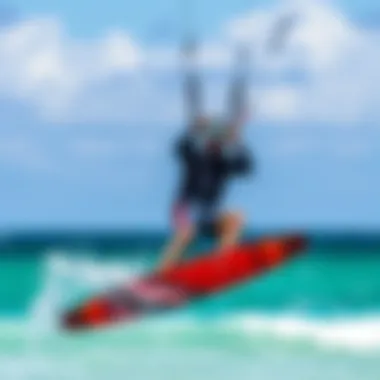
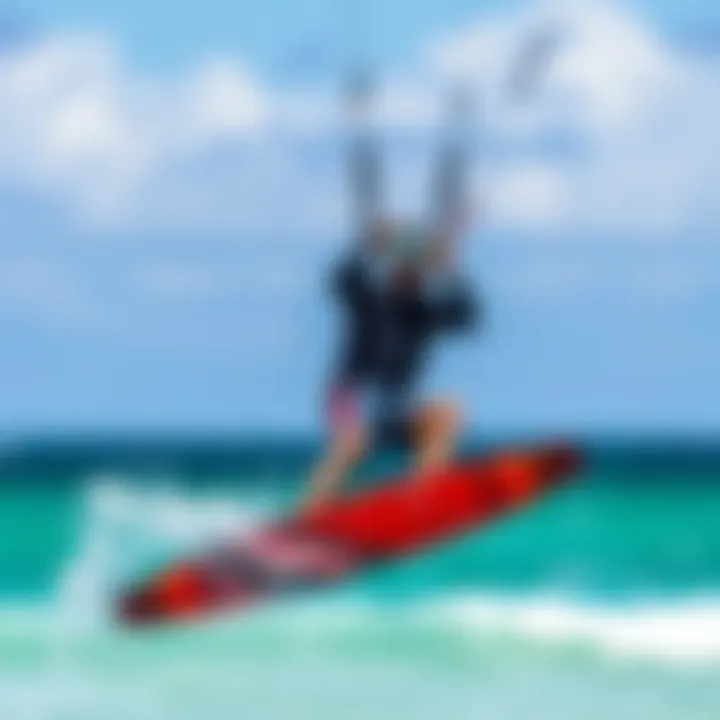
The essence of the Slingshot community lies in connection. Engaging with fellow kitesurfers extends well beyond competitions. Online forums and social media platforms like Facebook and Reddit are buzzing with discussions. Riders exchange tips, share locations for the best spots, and recommend gear modifications or upgrades. One can easily find groups dedicated to Slingshot gear, where individuals share personal experiences and setups.
In-person meetups often occur at popular kitesurfing destinations. Joining these gatherings allows you to:
- Learn from Experienced Riders: Observing advanced techniques firsthand and receiving live feedback can significantly boost your skill set.
- Join Group Sessions: Practicing with others makes for a motivating environment, encouraging everyone to push their limits.
- Access Exclusive Events: Many brands host small events or demo days, providing firsthand experience with the latest equipment, which could be a game changer for your riding.
Slingshot emphasizes community involvement. Engaging in local events not only strengthens your connection with other enthusiasts but also heightens your enjoyment of the sport. As one might say, “You can’t see the view from the top without the climb.” Being part of this community helps you scale those heights together, learning from each other along the way.
"The ocean is a powerful weapon against fear; it takes courage to ride the waves and even more to form connections with those riding beside you."
For more resources and community engagement, check out Kitesurfing subreddit or explore events hosted on Facebook that cater to your region.
Traveling for Kitesurfing
Traveling for kitesurfing provides a unique sense of adventure, allowing enthusiasts to explore new landscapes and cultures while honing their skills on the water. The importance of this topic cannot be overstated, as the journey is just as crucial as the destination. Kitesurfing isn't solely about riding the waves; it's about sharing experiences with fellow riders, soaking up the sun in vibrant locations, and forming lasting memories.
When selecting a travel destination for kitesurfing, one must consider several elements that contribute to a successful experience. These include wind conditions, water quality, and the local kitesurfing community. For instance, certain beaches have consistent wind patterns year-round, which can make for excellent kitesurfing conditions. Likewise, understanding local regulations and safety measures can also enhance the experience, ensuring that riders are compliant and safe.
Benefits of Traveling for Kitesurfing:
- Access to Diverse Conditions: Each location offers different wind and water conditions, allowing riders to adapt and learn.
- Cultural Exposure: Traveling opens doors to experiencing local cultures, customs, and cuisines.
- Networking Opportunities: Connecting with other kitesurfers can lead to shared experiences and valuable tips.
- Inspiration and Passion: A change of scenery can reignite one's passion for the sport.
Top Kitesurfing Destinations
There are numerous destinations worldwide that attract kitesurfers, but a few stand out for their ideal wind conditions and breathtaking landscapes:
- Hood River, Oregon: Known for its reliable winds and stunning Columbia River Gorge scenery.
- Tarifa, Spain: Often referred to as the kitesurfing capital of Europe, it boasts strong winds and a vibrant atmosphere.
- Noosa, Australia: Offers beautiful beaches and excellent conditions for both beginners and seasoned riders.
- Bonaire: A Caribbean gem known for its warm waters and consistent trade winds, making it a paradise for kitesurfers.
These locations not only provide excellent kitesurfing opportunities but also rich experiences that can enhance one’s understanding of the sport and its culture.
Packing Tips for Your Trip
Packing for a kitesurfing trip requires careful consideration to ensure you have everything needed without overloading your luggage. Here are some essential tips:
What to Bring:
- Kite and Board: Make sure to check the size and type according to the wind conditions at your destination.
- Harness: Essential for control and comfort while kitesurfing.
- Safety Gear: Helmets and impact vests can be lifesavers when tackling more challenging conditions.
- Clothing: Pack quick-dry swimwear and a wetsuit appropriate for the local climate.
Additional Considerations:
- Adapters and Chargers: Ensure you have the right chargers and travel adapters for your devices, especially if you plan to capture your kitesurfing exploits.
- Personal Items: Sunscreen, sunglasses, and a first-aid kit are essential for enjoying your time under the sun and staying safe.
- Documentation: Don’t forget necessary documents like identification and proof of kitesurfing insurance, especially for international travel.
Packing smart can make your kitesurfing experience far more enjoyable and stress-free, letting you focus on having a blast out on the water.
Remember, preparation is key. Make a checklist, stay organized, and ensure you’ve covered all bases before heading out to enjoy the waves.
Future Trends in Kitesurfing Equipment
The world of kitesurfing is in a constant state of flux, driven by advancements in technology and shifting preferences among riders. Understanding the future trends in kitesurfing equipment is more than just a passing interest; it’s a key to remaining competitive in this exhilarating sport. The significance comes down to how equipment design affects not only performance but also rider safety and sustainability.
New developments are making kitesurfing gear more accessible, user-friendly, and fun while also improving safety measures. As the sport continues to grow, it becomes essential to keep an eye out for upcoming trends that can enhance your kitesurfing experience. Here are a few key elements defining this evolving landscape:
- Technological Innovations: Emerging technologies are enabling improvements in kite design, material composition, and overall performance.
- Increased Personalization: Riders are now able to customize their gear more than ever before, opting for features that suit their style and skill level.
- Focus on Safety: New safety features are being integrated into kitesurfing equipment to better protect riders in various conditions.
- Sustainability: With a growing awareness of environmental impact, there's a shift towards using eco-friendly materials and practices in manufacturing.
Innovations in Kitesurfing Gear
The innovations in kitesurfing gear have transformed how enthusiasts engage with the sport. Lightweight materials, such as ultra-high-molecular-weight polyethylene, are starting to replace traditional fabrics, making kites more durable and capable of withstanding tougher conditions. Similarly, inflatable kites have seen significant advancements. Modern materials allow for quicker inflation and deflation without compromising structural integrity.
Smart technology is gradually seeping into kitesurfing gear too. Some manufacturers are developing kites with integrated sensors to provide real-time feedback on wind speed, kite performance, and rider dynamics. This tech can guide riders in making strategic adjustments for a more efficient ride.
Moreover, boards are being designed with flex patterns and rocker profiles that enhance performance and stability while also boosting comfort. Brands aim to cater to various riding styles, whether it's freestyle, wave riding, or freeriding, with customized options galore.
"The future of kitesurfing isn't just about what you ride; it's about how well you ride it. Understanding the tech can make all the difference!"
Sustainability and Eco-Friendly Practices
As the environmental consciousness permeates all aspects of life, kitesurfing is not being left behind. The industry is experiencing a renaissance focused on sustainability and eco-friendly practices. From the materials used in kites and boards to the processes deployed in manufacturing, brands are taking steps to minimize the ecological footprint.
Some companies are exploring the use of recycled materials in their equipment. For example, boards made from recycled plastics not only reduce waste but can offer impressive performance metrics. Manufacturers are also incorporating environmentally friendly adhesives, paints, and coatings to minimize harmful emissions.
Additionally, brands are advocating for sustainable practices among riders. This includes tips for being a responsible kitesurfer, such as opting for biodegradable gear, incorporating mindful travel to kite spots, and participating in beach clean-up events.















